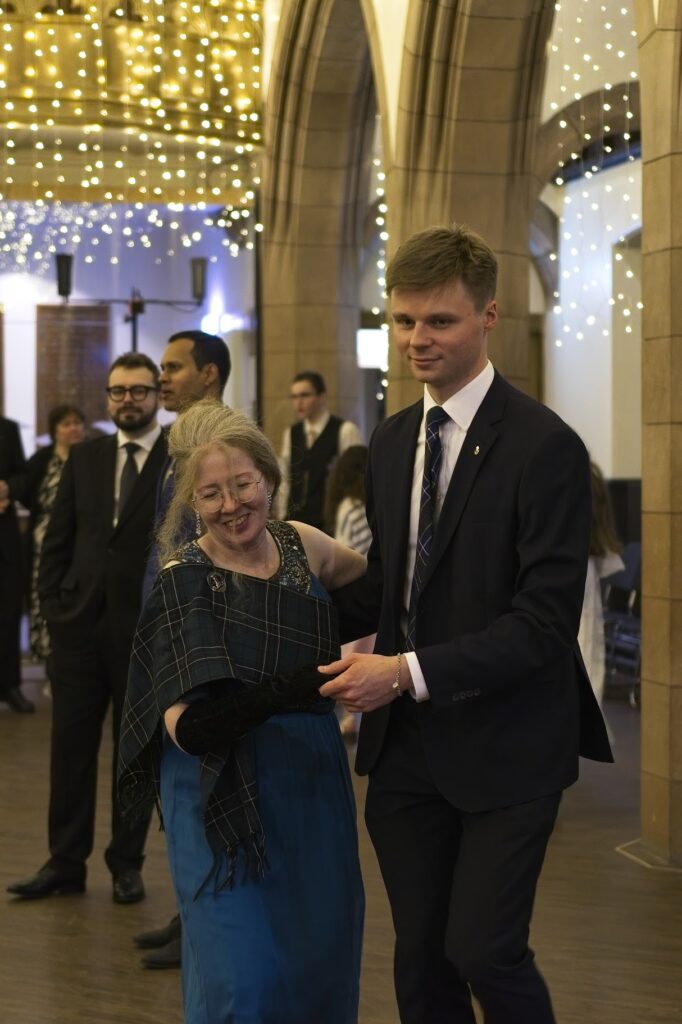Your basket is currently empty!
The Tea Party, Etc.
The regular crowd at Mrs McLean’s Waltzing Party have been invited to a tea party on October 25, and I will be giving there a brief address on the subject of the history of social dancing in Edinburgh. If you aren’t in the WhatsApp group, but should be, send me a message
Père Tabouret
For this reason, I have not yet finished reading Father Tabourot’s wonderful Orchesography although I have enjoyed drumming out the rhythms at the beginning of the book. Also amusing is this exchange between young Capriol, who wants to learn to dance, and the aged Canon of Langres, under his nom de plume of Thoinot Arbeau:
Capriol: Do not tantalise me by delaying any longer to grant my request to learn how the movements of the dance are performed, in order that I may master them and not be reproached for having the heart of a pig and the head of an ass, as Lucian did Craton.
Arbeau: Lucian did not address this reproach to those who had no wish to dance, or to those who wished to but were unable to learn the art, but to those who condemned it and desired to abolish dancing as an evil practice without reflecting that dances are of two kinds. One of these is employed in war for the strength and defence of the State, the other is recreative and has the virtue of attracting hearts and awakening love. It is a preliminary, and, as I have already told you, a useful device for ascertaining whether a person be deformed by the gout or otherwise defective of limb. Also whether they be comely and modest. We read that Clisthenes, having seen Hippoclides dancing and swaggering in an impudent manner, refused him his daughter in marriage, saying that he had danced his wedding away.
Capriol: God be thanked, I have no such infirmities, and only a sister twelve years old whom I shall instruct when you have taught me.
Homilies in Langres must have been learned, enjoyable, and full of classical allusions in the 1580s.
Vive la Contre-révolution
I look forward to more insights from the obviously pre-conciliar Fr. Tabourot, but in the meantime, I have been perusing much interesting material about social dancing in Edinburgh from 1705 until about 1975 when, one after another, the dance halls closed and (suspiciously often) burnt down. Even social dancing was a victim of the Sexual Revolution, it can be argued. Thus, reviving proper partner dancing is a counter-revolutionary act, and I’m there for it, as the kids say. (If that’s actually how the kids say it. I tried out the phrase on a twenty-something, and he merely looked confused.)
Le Swing
In related news, lately I have been taking two Beginners’ Swing Dancing classes a week, and I have learned a lot. Some very useful information has been the actual names of various dance steps or routines, notably that of “The Texas Tommy.”
I suspect “The Texas Tommy” of the 1990 – 2025 Swing Revival is not the same as that of 1910, and if true that would give weight to teachers’ arguments that steps are given different names by different instructors. However that may be, it is helpful to file the moves away in the memory under a name: “Swing-out”, “Under the Arm,” “the Lindy Circle,” “the Leader’s Sneak”, “Sugar-push”, “Walk in the Park”, “Kick-outs”. And of course there are also such handy moves as “Boogie Back”, “Tacky Annie,” and “Shorty George.”

Les Enfants
My dream of including young parents and their under-12s in traditional Catholic social dancing is taking shape. I have now booked a hall for January 18, and two young ceilidh musicians have enthusiastically volunteered their services. So stay tuned for further details.
Les Photos
Finally, Gerald has put the finishing touches on his and Giulia’s photographs of The Third Annual Michaelmas and made a link available to everyone who was there. (I have thus added some to my report.) If you were there but have not got the link, please do send me a message!
Thank you to all those who made the Michaelmas Dance 2025 such a success! A very Happy Feast Day to you all. Coorie in!
